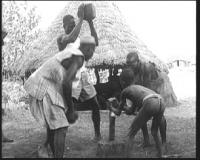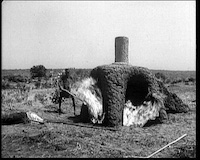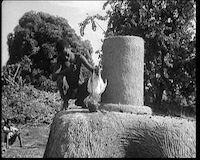Version : French
Duration : 15'
Format : 35 mm. - 16 mm. - Béta SP - DVCam
Black & white
Producer : ARMOR Films - Fred ORAIN
Country
France
With
Commentaire dit par René LEBRUN
Music
Thémes originaux africains
Picture
Mario MARRET
Stage set
Village in southern Mali
Archive footage
- African village: women carrying grain and water on their heads,
- Millet is pounded to make millet beer,
- Rombé players representing the way of the ancestors,
- Feathered altar after a sacrifice,
- Villagers looking for water near a river,
- Preparing the blast furnace for smelting,
- Refuelling and loading the furnace with coal and ore
- Dismantling the furnace and extracting the iron ball,
- Shaping the iron by rhythmic tapping,
- Rites of incatation of village farmers,
- Farmers in line digging the soil to the sound of drums. Village in southern Mali
Some West African tribes smelted the iron ore they found in the ground and worked the metal, but who, when and where did they develop this delicate and rudimentary technique ? After using their own hands to build blast furnaces made of earth mixed with straw and ventilated by tuyères, and after making numerous sacrifices to ensure the support of the desert wind, the blacksmiths succeeded in smelting the iron ore using charcoal as their only fuel. Using lianas, they extracted a glowing ball of iron from the furnace, which was then cut and forged before cooling. In this way, the iron ore that makes the land of West Africa barren is transformed into precious tools that enable people to grow grain in this stingy land.


